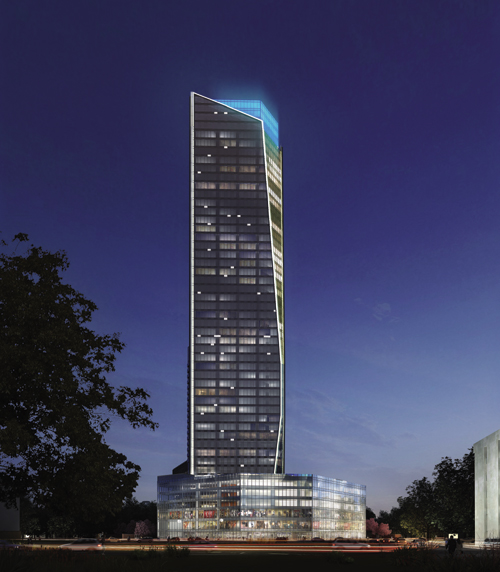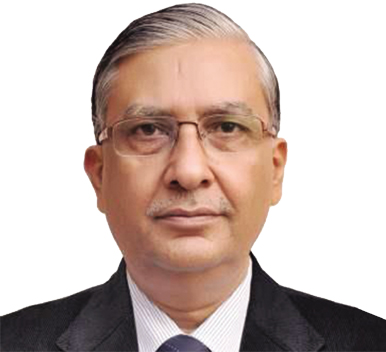
CEO & President, SSA Architects
 Upholding his passion for sustainable architecture and delivering flawless execution, Sandeep Shikre, CEO & President, SSA Architects, shares his insights about the distinct facets involved in green construction. An interaction with Veena Kurup of ENN
Upholding his passion for sustainable architecture and delivering flawless execution, Sandeep Shikre, CEO & President, SSA Architects, shares his insights about the distinct facets involved in green construction. An interaction with Veena Kurup of ENN
What is the impact of Green Building movement on India’s infra-construction sector?
Current scenario is very subjective in nature. Awareness towards development of green buildings began in our country about 10-12 years back, when the first CII (Confederation of Indian Industry) headquarters was built in Hyderabad. At that time, everyone wondered what the ‘Green’ approach was. However, the scenario has undergone a sea change, and now after 10 years, people are increasingly becoming aware of the Green approach implementation. Masses are becoming more and more aware about the correct interpretation of the Green Buildings concept, and a lot of developers seem passionate about adopting and implementing this sustainable development mode.
The major credit for spreading green developmental message must be given to the industry associations like Indian Green Building Council, TERI and GRIHA. Any new initiative can be motivated and effectively practised only when tangible measures are attached to it. The rise of rating systems has increased the enthusiasm and approach of the customers towards the Green momentum. But the sector still has a lot of scope for improvement and there is a need for correct understanding of the concept.

CEO & President, SSA Architects
Is cost a hurdle for the positive pace of Green Building movement?
It’s a myth that architecture and construction of green buildings are expensive. The concept needs to be understood well. The fact is that it is an intellectual property that requires an effective approach and proper expertise. A decade ago, construction of reen buildings involved an incremental cost of about 12-14 percent, because green technologies were not readily available then. Even the product and technology vendors were not fully efficient or available with the green concept. But the situationhas changed today: the world is coming closer and resources are also more easily available. Today, you can develop a platinum building using the most difficult and challenging green construction methods with an incremental cost of just 2 percent. This is the beauty of the exercise and can be effectively implemented with the availability of distinct quality engineering and architectural experts.
A vital requirement while constructing a green building is the need to ensure energy efficiency of the green building or structure. Such a scientific approach is already practised in developed countries, where the buildings are rated with POE (Post Occupation Evaluation). Hence, such rating parameters are crucial, and can create more vibrant acceptance among the people.
Besides, other vital concepts involved in the development of Green structures are the effective utilization of natural resources, especially water and energy. Today, we see a positive scenario as theneed for effective management of water resources, recycling and harvesting of water are being realised and increas ingly being practised.
Kohinoor Square has created a record at the Council of Tall Buildings & Urban Habitat (CTBUH) to be the tallest Mixed Use and Commercial Building in India
What is your approach to wards recycled building mate rials and water technologies?
Basically, sustainability can be associated with three prime words – reduce, recycle and reuse. Resources when utilised smartly can be reused. Hence today, manufacturers not just opt for simply building materials, but for products that do not degrade easily and can be recycled.
Water is a very vital resource for the survival of mankind. We can’t afford to waste it and let it go down the drains. For instance, in a city like Singapore, black water is recycled and converted to potable water. This shows the progress in science and technology being implemented and successfully practised in our neighbouring regions. India has not yet reached that level of operation, but going by the current pace of changes, we are optimistic about the developments ahead. With the advancements in green technologies, if utilized effectively, even the smallest residential building can be installed with water treatment plants in future.
India no ‘greenhorn’
“ Today, India is the second-largest country in the world in terms of green footprint, with US having the highest green footprint index. With effective planning and sensible execution, we can emerge as the most sustainable nation ”
What is the role an architect plays in Green Buildings?
The architect plays a crucial role, as he is the author of the entire green building story. It must be clearly understood that construction of a quality green structure is possible only when practised from the foundation stages. The green initiative has to be an integral process, which needs to be adopted since the inception of the process. A good architect understands sustainable structure develops the building from first day and makes it micro-climate responsive, which is in sync with the engineers and energy conservation methodologists.
An architect is the leader of a structure and it is under his leadership that experts from distinct arena chip in their inputs and then a final sustainable product is achieved.
On a global scale, where do you rate the advancements in India’s Green Building movement?
The Green Building movement is spreading fast in India. It is now the second-largest country in the world in terms of green footprint, with US having the highest green footprint index. On the basis of increasing adoption and awareness levels, India is ahead of European countries. Many villages and interior areas in India are still devoid of power or face power and water shortage. This has forced them to use renewable energy resources and practise rainwater harvesting, recycling and treatment methods. Indians are hardly luxurious in utilizing the natural resources. Hence,India is sustainable in nature by birth. With effective planning and sensible execution, we can emerge as the most sustainable nation.
What are your expectations from the green architecture in the coming years?
Green is the need of the hour and there is no option but to adopt and implement it. The only expectation is to aim towards raising the operational bars in terms of efficiency, introducing new innovations and setting up idealistic models before the public to strengthen mass awareness. Also, strategic modes of defining and implementing deciding parameters are required to fast-track the adoption and understand the need for green approach. Such an attitude will lead to creation of a motivating atmosphere, where the basic principles would be clearly defined. Close participation is required of all stakeholders in leveraging the success of the Green Building movement.





















